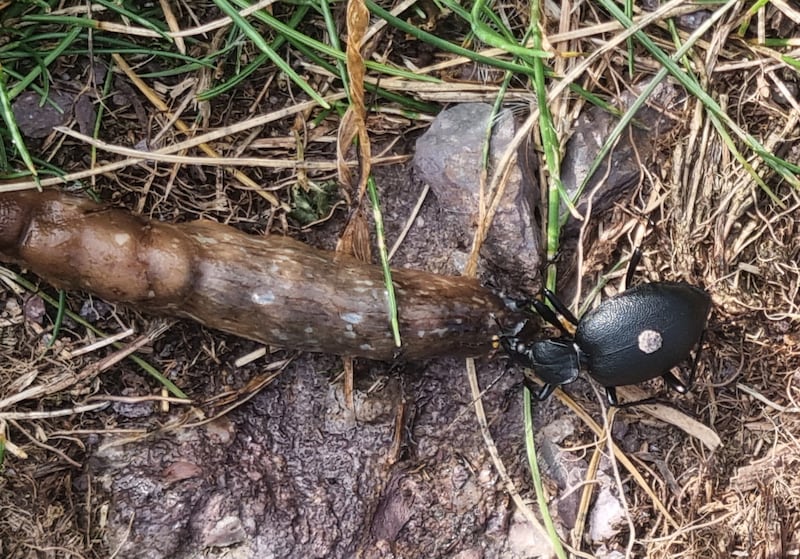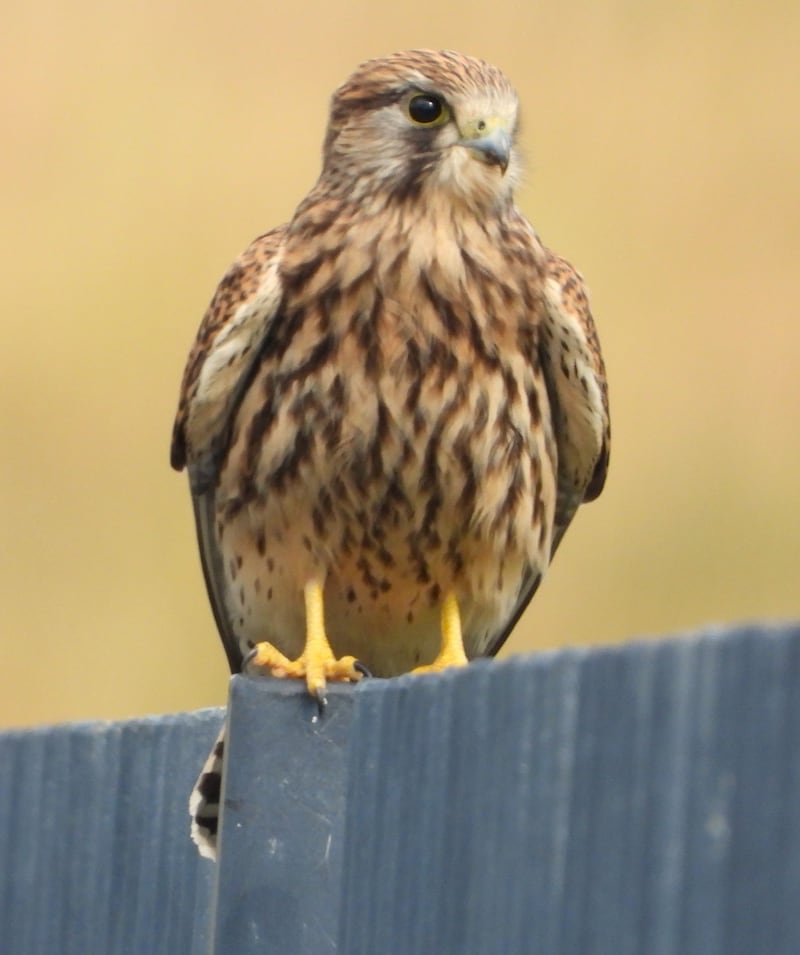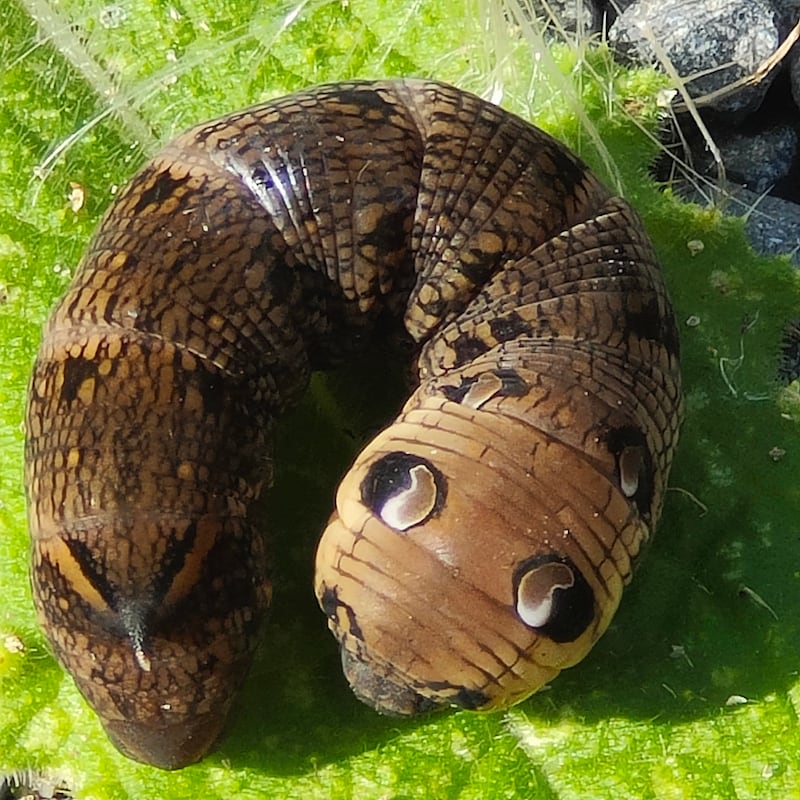I noticed these footprints, about 8cm long, in sand at low tide opposite Ards Forest Park. There have been sightings of otters nearby. John Gillespie, Co Donegal
The size and shape of the prints indicate that they were made by the hind feet of an otter. The otter is the largest of our mustelid species, which also includes the badger, the pine marten, the stoat and the mink. Mustelid footprints show five toes – whereas those of dogs and foxes show only four.

I recently saw this beetle-like critter attacking a slug on Beenbawn Head. It has a single spot on its back. I couldn’t find any identification on Google. James Farrell, Co Kerry
Google is not the be-all and end-all. This is a ground beetle (Cychrus caraboides) that attacks snails and slugs. The mouth parts have adapted to fit into snail shells but it will eat slugs, too. It is common in shaded places wherever there is an abundance of prey. It is primarily a forest species but is also found in upland heather moors. It is widely distributed and common. The spot may be a mite or a growth on its back.
READ MORE
This is probably a very common butterfly, recently photographed in Sandycove. Edmund Ball
It is a lovely image of a painted lady butterfly feasting on nectar from a verbena. Like its relative the red admiral, the painted lady is an annual migrant, arriving here usually in midsummer from southern Europe. It then breeds, laying its eggs on several food plants such as creeping thistle, nettle and mallow. Caterpillars feed on the foliage, pupate and the emerging adult can live for about a month. This very fresh-looking specimen is definitely a Dub. Some adults of this generation are known to migrate southwards again come autumn. They make this return journey at high altitude, out of view of butterfly observers on the ground, as radar records have revealed.

I saw this kestrel out around Rogerstown Park in north Co Dublin. Is it a male or a female? Niall MacNeill, Co Dublin
It is a female, which has a brown-streaked head and several dark brown bars across the tail, whereas the male has a bluish-grey head, rump and tail. Its Irish name (Pocaire gaoithe) describes its stationary hovering in the air before plummeting down upon an unsuspecting mouse, whose presence it has detected from the trickles of urine left by the mouse as it scurries about. These trickles reflect ultraviolet light, which the kestrel is able to see and can therefore pinpoint the mouse’s location. Kestrels – once our most common bird of prey – are now red-listed in the recent 2020-2026 Birds of Conservation Concern in Ireland report. This is attributable to severe declines in viable breeding populations in recent years because of reduced prey, intensification of agriculture and secondary rodenticide poisoning.

I recently found this guy crawling along the road along our land. It seems very large for a caterpillar. Paul Maguire, Co Mayo
It is indeed a very large caterpillar – up to 90mm long when fully extended. This is an elephant hawkmoth caterpillar – so-called because it has a trunk-like snout in front of the segment with the eye-spots on it. However, when alarmed – or when having its photo taken – it can withdraw this snout and swell up and look very convincingly like a small snake. This usually deters would-be predators. Your specimen was crawling off to find a place to become a chrysalis. The adult is a large bronzy green moth with pink stripes.
Please submit your nature query, observation, or photo, with a location, via irishtimes.com/eyeonnature or by email to weekend@irishtimes.com















